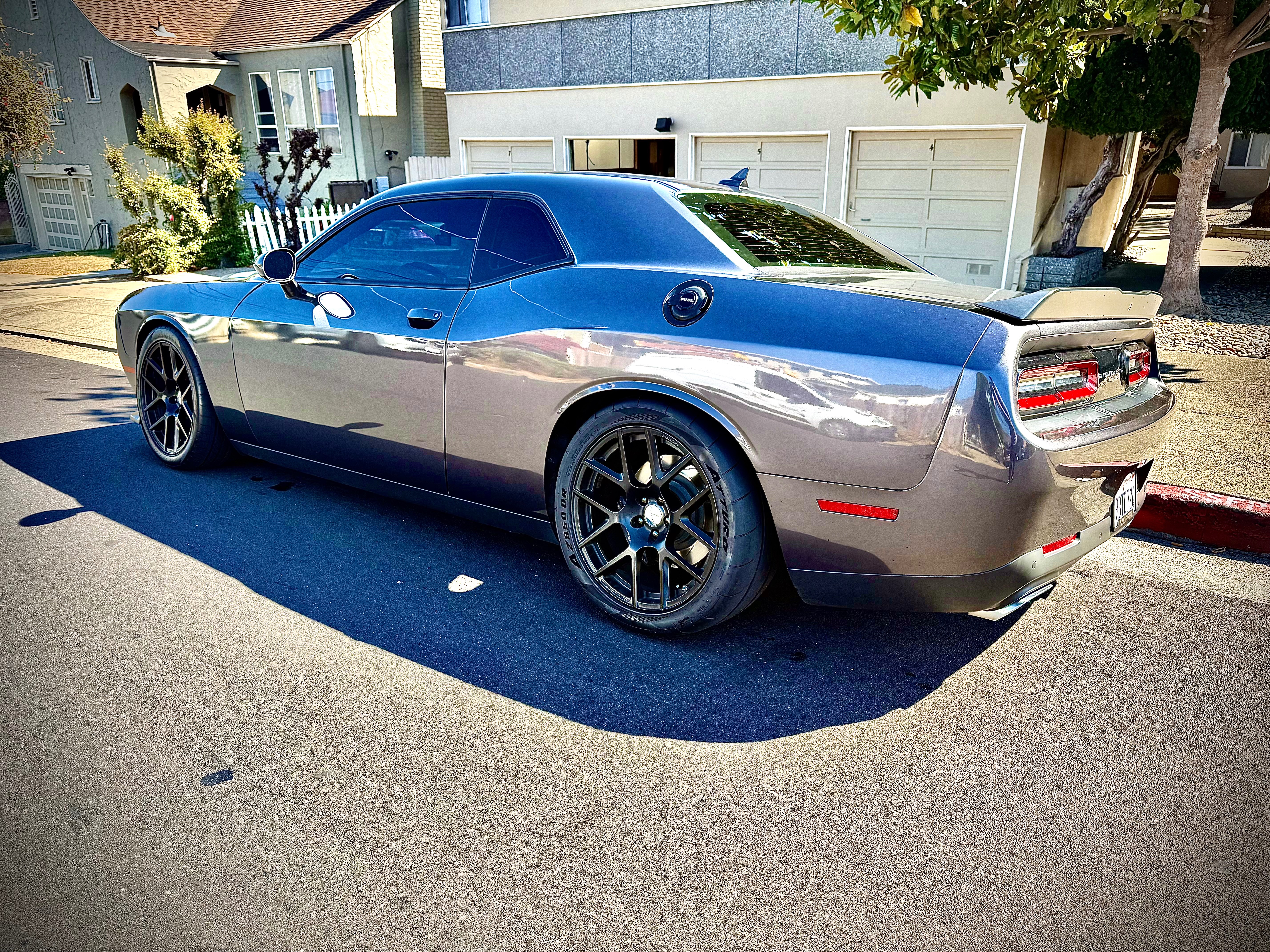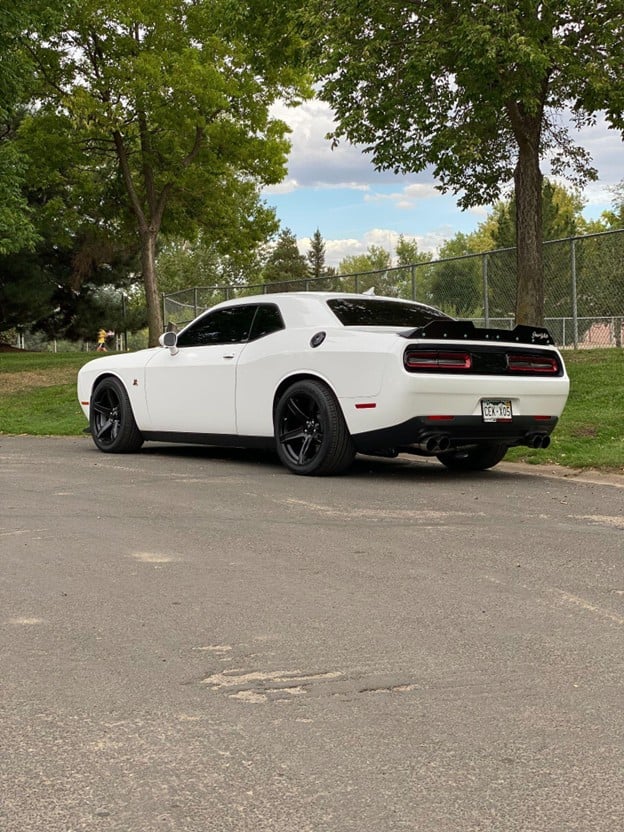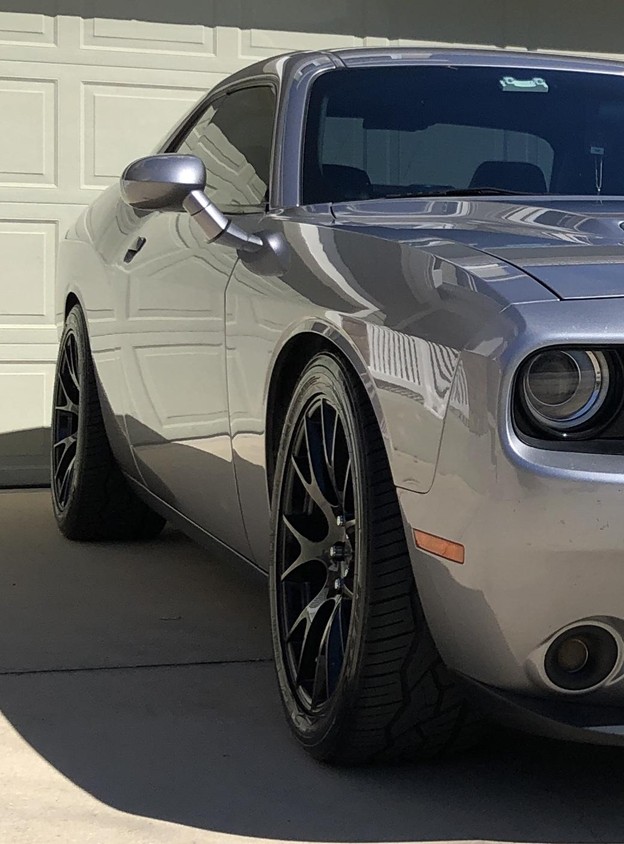
Wheel Fitment Guide to Upgrade Your Challenger

The Dodge Challenger stands apart from the rest of modern car production. The styling, bold size, meanness, and huge power give it a lot of potential, and with the huge aftermarket support, you can modify it to suit your exact wants and needs, whether that’s a charismatic daily driver, a true sports car that can handle the track, or a show car. With the right Challenger wheels and fitment, you can achieve either of these setups. Many think of wheels just as an aesthetic upgrade, but there’s much more to them. The wheels and their fitment dictate how the car works and affect the car on every level – looks, handling, comfort, practicality, and more. Proper fitment is the key to achieving both style and function without sacrificing daily drivability.
Basics of Fitment
Understanding the basic measurements related to fitment is the key to choosing the right wheels for your Dodge Challenger. Primarily, we’re interested in the wheel diameter, width, offset, and bolt pattern. Bolt pattern is the easiest to figure out – the 3rd generation Challengers all have a 5x114.3mm bolt pattern, which is common on many other cars, giving you a wide range of options. Then comes the wheel diameter, which is typically 18 to 20 inches for Challengers but can even go higher in rare cases. In terms of width, the typical range is 9 to 11.5 inches, and for offsets, we recommend values between +35 and +15 in most cases. Staying too far outside these specs could lead to clearance issues. With an offset too high, the wheel will be buried inside the fender, while making it too low, they might go too far out, causing the tires to rub on the fenders. Getting any of the settings wrong can lead to poor handling.
Brake and Suspension Considerations

Another aspect to consider is brake clearance. If your car comes with a big brake kit, some of the smaller wheels might just not fit. Even factory upgraded brakes may not fit with certain OEM wheels, so it’s worth confirming the sizing of your brakes too. Just as important to consider is the Challenger suspension. If you’ve installed lowering springs or coilovers, your car will have a lower clearance than from the factory, which can again cause fitment issues with incorrect wheels. On the bright side, the Challenger has a particularly wide and muscular body and can accommodate some of the largest wheel setups.
Many Options to Choose From

As already said, with wheel fitment, you can make the Challenger your own. Whether you want to have the most extreme show car or just a nice daily driver, you’ll find the right option.
Daily Driver Build
If your Challenger is a daily driver, you’ll want to make sure to stay within the measurements we’ve laid out above. This means staying within the 18” to 20” wheel diameter range, with a wheel width of 9” to 10” and an offset also close to factory spec. A square setup using 20x9-inch wheels with 275/40R20 tires is a great option for this purpose. It maintains the stock ride quality, avoids rubbing, and keeps road noise to a minimum. In addition, you can avoid undergoing any other modifications and won’t have issues sourcing out rims or tires of this size.
Focused on Performance
If you’re looking to unlock the full performance potential of your Challenger, you’ll want to prioritize grip and control in your fitment. These kinds of setups typically come with a square fitment with wide tires all around, such as 20x10-inch wheels with 295/35R20 tires, offering equal traction and turn-in response on both axles. The goal here is to maximize the contact patch without compromising geometry or causing rubbing of the tires under load. You’ll also want to look for wheels that are lightweight to reduce unsprung mass. Performance builds go hand-in-hand with big brake kits, so if you have one, you should factor this in too.
Low and Wide
If you’re more interested in building a show car with sharp looks, rather than being concerned with practicality and driving performance, you can choose a much more aggressive fitment. You could go with wheels sized to 20x11” or even 22x11.5”, +20 offset and low and wide rubbers, like 315/30R20. Combined with lowering springs or coilovers, pulled fenders, and a negative camber, you’ll have an unusual and extreme look. Of course, such a setup won’t be comfortable, you might have clearance issues when going over curbs or speed bumps, and longevity won’t be anywhere close to OEM either, but that’s the tradeoff you have to accept for the extreme looks.
Make the Challenger Your Own
The Dodge Challenger comes with a strong character already from the factory, but with a set of new wheels and a changed fitment, you can adjust the character to your liking. Make sure to choose your wheels carefully and don’t forget about all of the implications that aftermarket wheels come with. The result can be amazing, but careful attention is needed. If you have additional questions, don’t hesitate to contact us, and we’ll be more than happy to help.